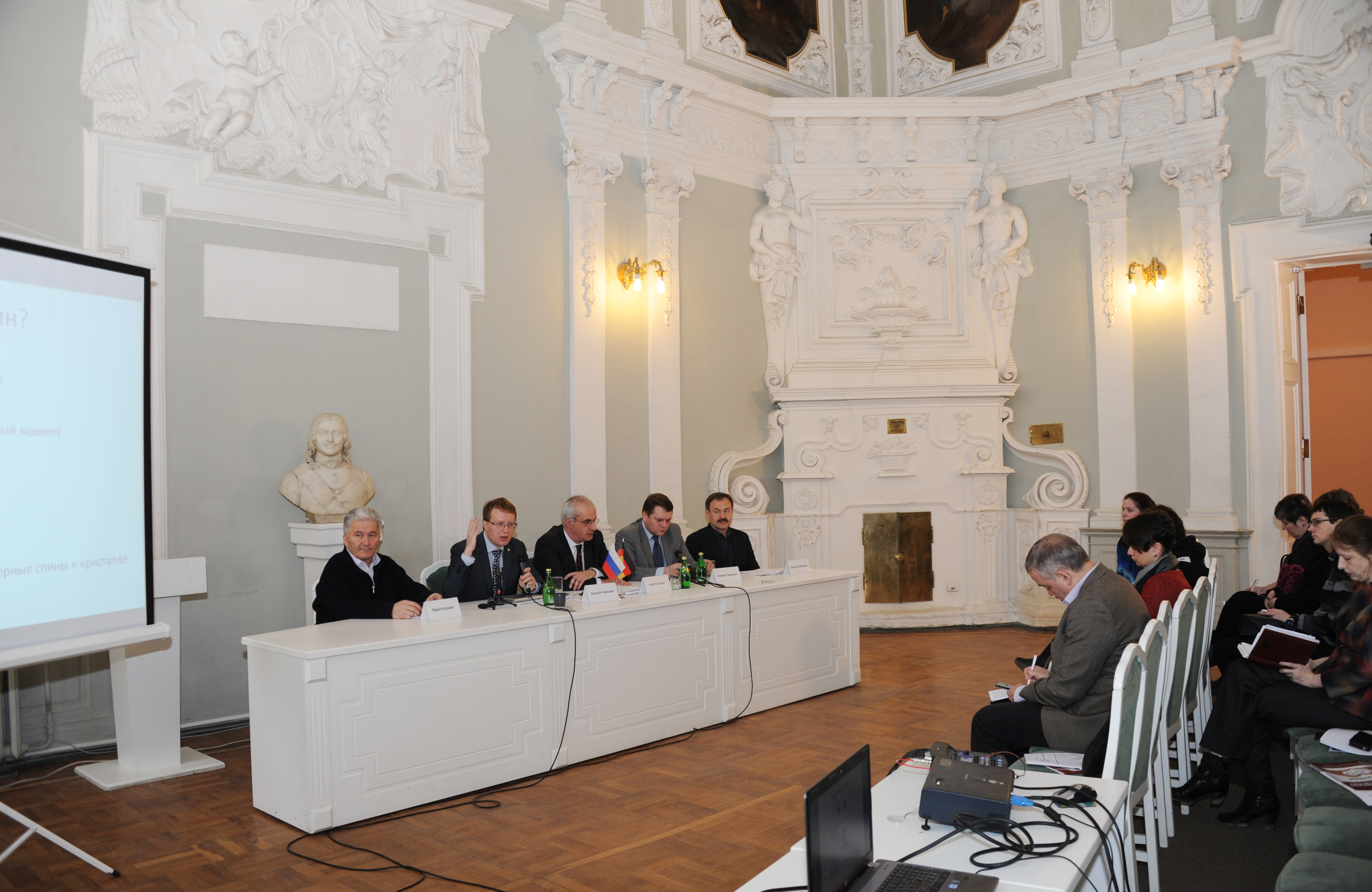Press Conference on the First German-Russian Collaborative Research Centre (TRR 160) in St. Petersburg

Science Lunch with a presentation on TRR 160 between the Technical University of Dortmund and St. Petersburg institutions at the State University.
(27.03.15) At the last meeting of 2014, the responsible Grants Committee of the Deutsche Forschungsgemeinschaft (DFG, German Research Foundation) made the decision to establish eight new Collaborative Research Centres (CRCs). Two of the eight new networks are so-called Transregios (TRR), spread across multiple research sites, including the first German-Russian CRC. TRR 160 between the Technical University of Dortmund and Russian research institutions sent out invitations to attend a press conference at St. Petersburg State University in March.
The new Collaborative Research Centres have been funded since 1 January 2015, initially for four years, which means that a total of 240 CRCs are receiving DFG funding. In addition to the host university (the Technical University of Dortmund) the University of Bochum, the University of Paderborn and their Russian counterparts the Russian Academy of Sciences Ioffe Physical-Technical Institute and St. Petersburg State University (SPSU) are involved in the first German-Russian Collaborative Research Centre (TRR 160). Together, just under 150 researchers plan to explore the topic of "Coherent Manipulation of Interacting Spin Excitations in Customised Semiconductors" over the next twelve years.
Aleksey Zavarzin, the State University's Vice-Rector and Press Secretary, asked Manfred Bayer, the German spokesperson for TRR 160 from Dortmund, and his two Russian colleagues Kusrayev (Ioffe Institute) and Kavokin (SPSU) to attend a Science Lunch at St. Petersburg State University. These researchers from the two countries presented their bilateral long-term project to several representatives from the media. Through the targeted control of spin excitations, the team hopes to make decisive progress in developing new components for information technology in the semiconductor materials that are used for this purpose.
The charge carriers in these materials rotate like a spinning top, a property known as 'spin'. But how can this be put to use in electronic components? TRR 160 intends to answer this question by manipulating the electrical, optical and above all magnetic properties of electrons in semiconductors. The researchers will use state-of-the-art spectroscopy techniques and theoretical methods and develop new material and component concepts. Ultimately the group hopes to lay the foundations for spin electronics, spin optics and spin-based quantum information processing.
Further information: